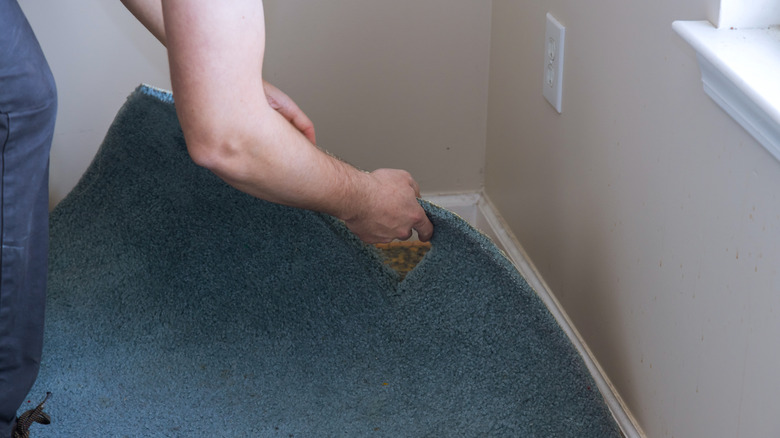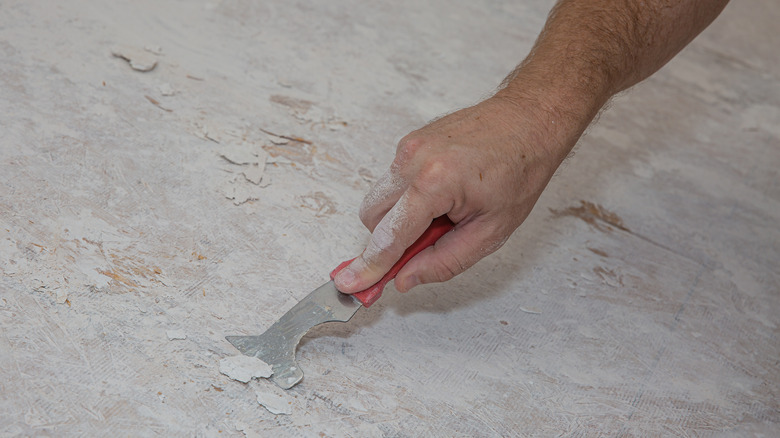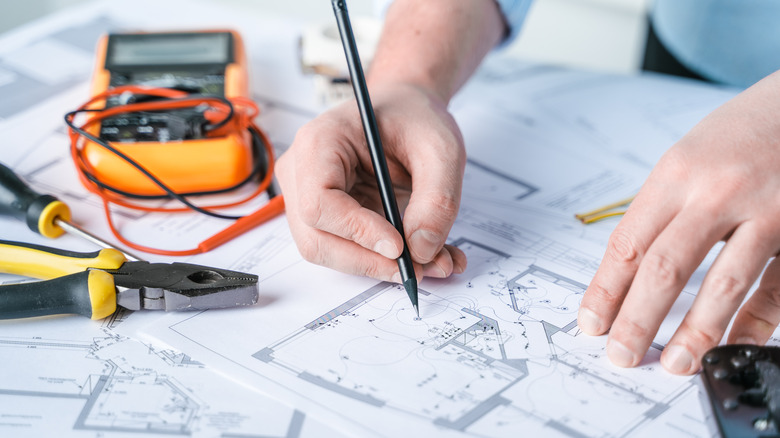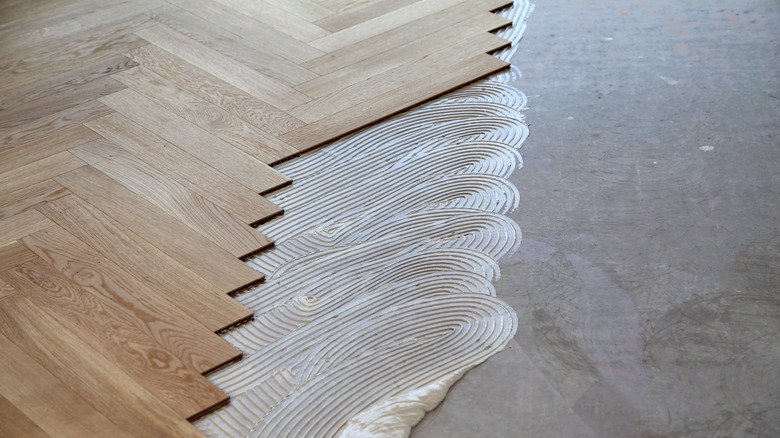5 Things Everyone Should Know Before Ripping Up Their Carpet
Carpet replacement it's common in households all across the United States. In order to change your flooring — either through the use of new carpeting or with a transformation to hardwood, laminate, or tile — you'll need to tear out the existing carpet to create the conditions necessary for a new installation.
This can seem like a simple task, and in many ways ripping out old carpeting is fairly straightforward. However, there are some significant challenges that homeowners may face while removing the old carpet to install a new one, and the process can be far from easy for many.
Angi notes that carpeting will typically last for about 10 years before requiring a replacement, so this can be a solid guide as you start to think about flooring enhancements in your home. Whether you're ready to take the plunge now or are building up to the job over the coming months (and saving for the expense of removal and replacement, too), these essential pieces of knowledge can help make the exchange far smoother.
1. The removal job isn't done just because the carpeting is gone
The first thing to keep in mind when replacing carpeting is that the removal process contains more individual tasks than simply ripping up the carpet and throwing it away. First of all, carpeting is held down by tack strips that run along the edges of each carpeted room. These strips force the individual engaged in carpet removal to pry away the edges of the carpet, which can be a significant task all on its own.
Once the carpeting is separated from these tack strips, it needs to be rolled up and taken out of the room. In addition to the edgework that goes into laying carpeting, this flooring option is often secured to the floor with glue or other fastening approaches across the interior dimension of the room. So, carpet removal involves tearing, cutting, and scraping to release the carpeting from the subfloor; then, the heavy rolls of carpet must be hauled out and disposed of (via Tips Bulletin).
As well, carpeting removal and disposal isn't always as simple as leaving roll after roll down at the corner of the driveway for the weekly trash pickup. You may need to haul away the carpeting on your own to a specialized disposal facility. Alternatively, you might consider donating carpeting that's still potentially useable to the Carpet America Recovery Effort, a non-profit founded in 2002 seeking to reduce the burden of dense carpeting on the waste system.
2. Preparing the subfloor for a new surface can time consuming
Another important consideration to make when removing carpeting is the preparation work that will be required before you can lay new flooring down in the space. For instance, the tack strip used to secure your carpeting will need to be removed entirely if you're planning to install tile or hardwood floors into the space. Alternatively, if you are laying down a new carpet, you'll need to investigate these tax strips to ensure that they remain a viable means of securing this new flooring element, replacing any that don't provide sufficient grip.
As well as the edge pieces, no matter what kind of flooring you intend to place in the room, cleaning the subfloor and removing any debris from the previous material will be essential. The gunk leftover from previous gluing across the space can be a real pain to extract, so planning this process into your workflow will ensure that you are properly prepared for the commitment of removing and replacing carpeting. It can be helpful to think about specialized removal techniques in advance so that you're completely prepared for the effort that lies ahead (consider these glue removal options from Tips Bulletin).
One of the worst things that can happen to a homeowner engaged in any kind of DIY project is a misunderstanding of the effort involved in the job they're tackling. This divide between expectation and reality can turn even the most passionate DIYer off of home improvement.
3. Selecting the new flooring element involves a lot of considerations
Choosing the type of flooring you'll replace your carpeting with is the next step in the process. Some homeowners may opt to just stick with carpeting, and this is a fine choice in plenty of residential spaces. When it comes to bedrooms, hallways, or even living room areas, carpeting offers a wonderfully comfortable option that can fit neatly into plenty of budgets and style preferences.
But it's important to remember that whether you are considering installing carpeting or any other flooring option, this new edition will likely be in the home for 10 or more years. During any home renovation project involving flooring, it's crucial to spend enough time selecting the new design features that will make their way into your living space.
When removing carpeting from a room, it's easy to focus solely on the extraction components, but perhaps even more important is the replacement that you'll be adding to the space. Petty, Son, and Prestwich suggests thinking about maintenance requirements, style, and the practicality of any flooring element in your unique environment. Make sure you spend enough time in this part of the process to ensure continued comfort and relaxation in your home once the carpeting has been removed and something new takes its place.
4. Material calculations expand beyond simple square footage figures
Once you've chosen the appropriate flooring installation, the next step in the process is to make precise calculations about how much material you will need to cover the area. There will always be unique challenges to laying flooring in any home environment. This is because no room is likely to be perfectly square, and when buying materials, you are unlikely to see rolls of carpeting, tiles, or boards that precisely match up with every dimension of the space — therefore requiring no cutting or edge manipulation.
Starting with an understanding of your home's square footage will help you start any purchasing process, but this is only a jumping-off point and shouldn't be used as the only metric to gauge your flooring purchasing requirements. Comparing your square footage measurements with the dimensions that your chosen flooring arrives in will help you make better decisions about how much material to buy. You'll likely end up with more material than is strictly necessary to cover the floor, but having excess material allows you some wiggle room when it comes to mistakes or an overage that can be used to patch problem areas later on. Indeed, Carpet Captain notes that leftover carpeting is invaluable in repairing the damage caused when a stain or hole appears in your flooring.
5. DIY installation is possible, but may often be the wrong approach
Finally, any homeowner thinking of changing their carpeting should be aware that DIY installation is possible but comes along with certain risks — especially when installing a new carpet feature to replace the old one.
A professionally laid carpet is stretched in such a way that the entire flooring element sits flat and snug against the subfloor. With the tack strips and glue combined with critical stretching equipment, a professional can make a carpet look absolutely stunning and give it a long-lasting life right from the start. In contrast, homeowners often find it difficult to gain access to these same stretching techniques because the equipment is hard to find and even harder to use for those who are untrained. Express Flooring reports that a power stretcher is the proper addition to your carpet installation worksite and enhances the efficiency of the task by a significant margin over hand stretching.
There are some obvious pitfalls that a homeowner untrained in floor laying can fall into, so if you're in doubt about your abilities here, it's probably best to hire a professional to finish off the job.





